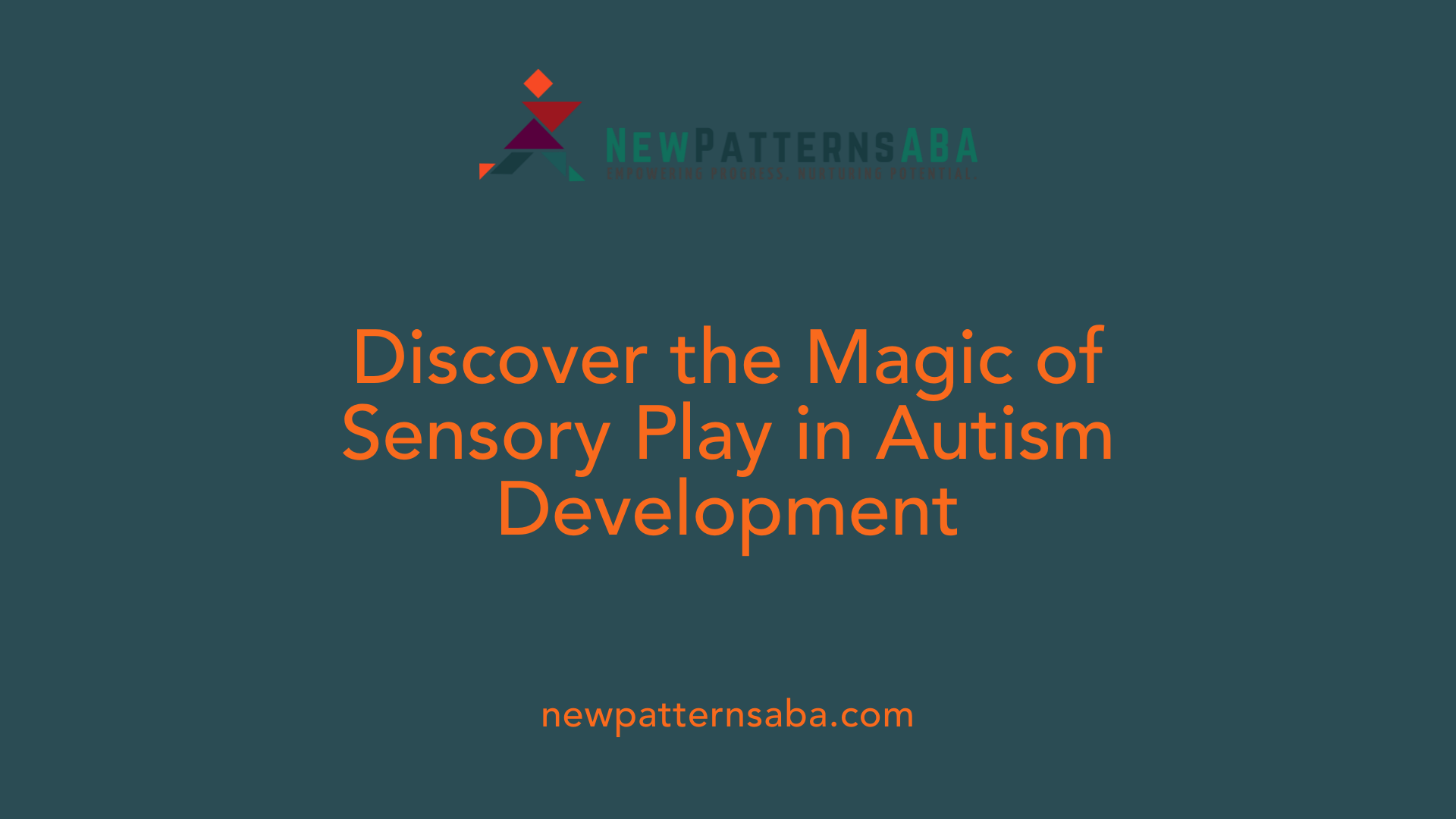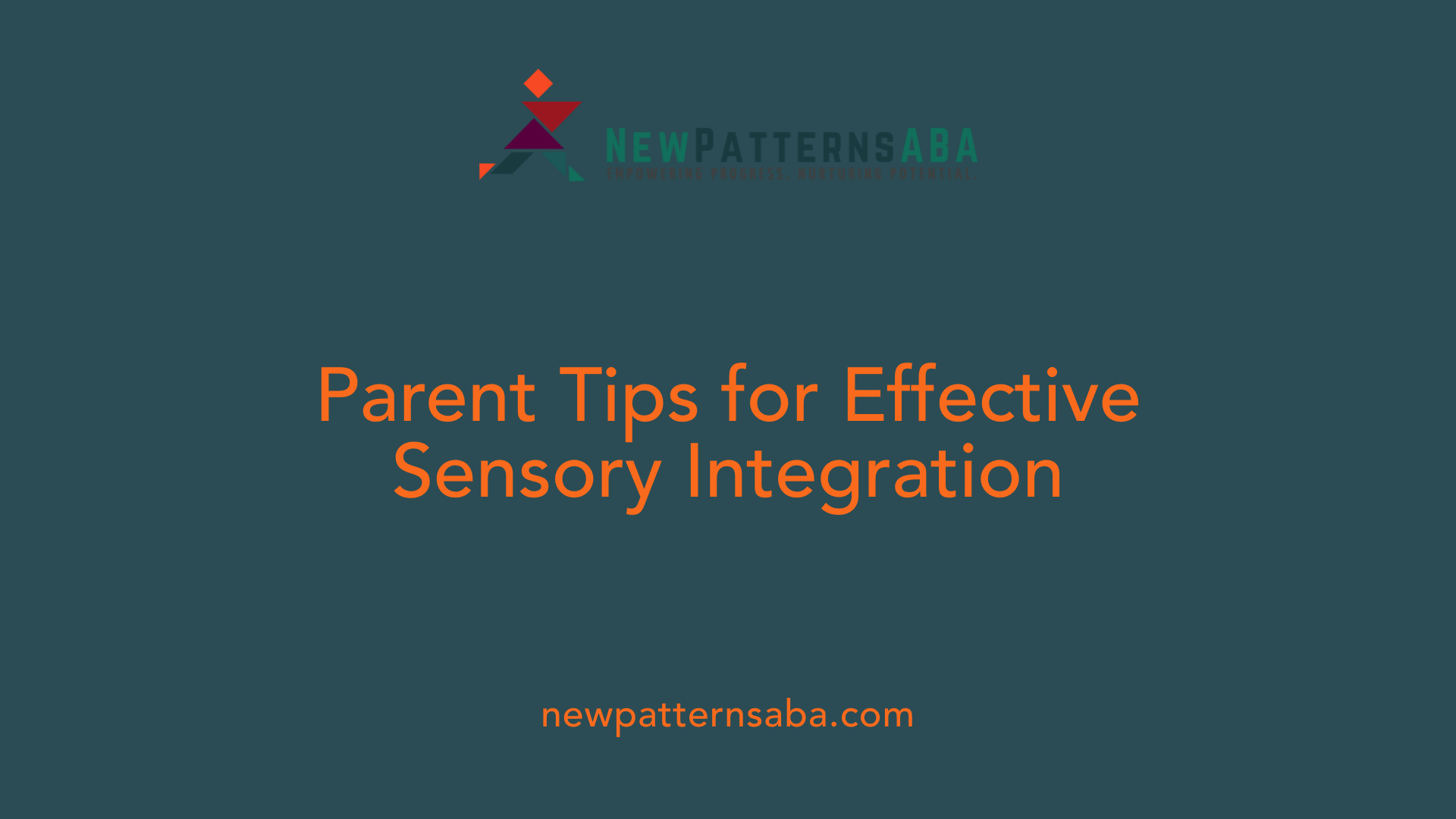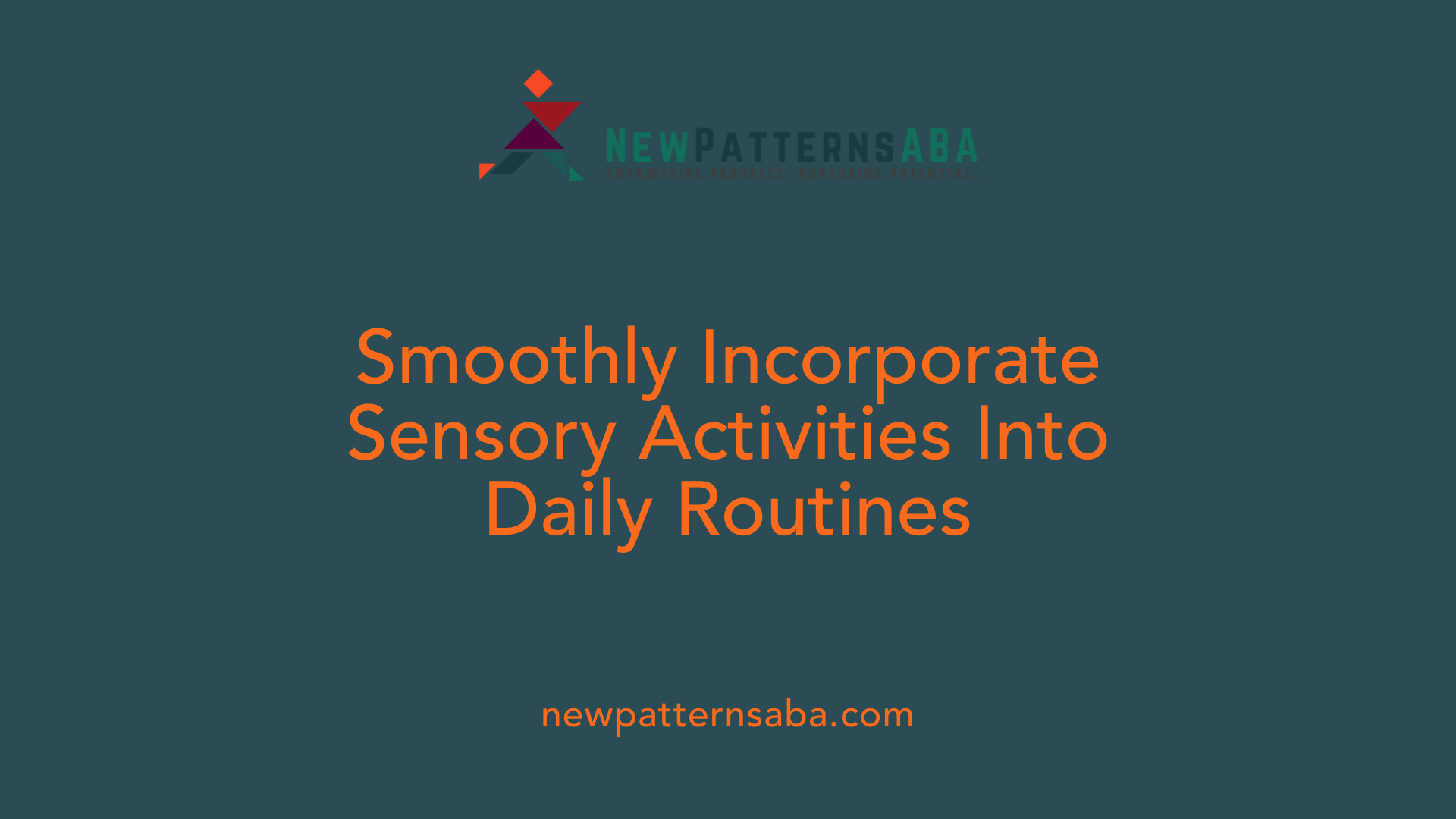Transforming Daily Routines with Sensory Strategies for Autism
Integrating Sensory Activities for Better Regulation and Development
Incorporating sensory activities into daily routines can significantly enhance the quality of life for children with autism. These activities support sensory processing, emotional regulation, motor skills, and socialization. By tailoring sensory play to individual preferences and needs, parents and caregivers can foster a supportive environment that promotes independence and well-being.
Understanding the Importance of Sensory Activities in Autism

What are the benefits of incorporating sensory activities into the daily routines of children with autism?
Including sensory activities in the daily routines of children with autism brings numerous advantages that support their overall development. These activities help improve how children process sensory input, which can often be overwhelming or under-responsive in autistic children. By engaging with various sensory experiences—like touching different textures, hearing diverse sounds, or moving through space—children learn to regulate their sensory responses more effectively.
Sensory play also supports emotional regulation, reducing feelings of anxiety, stress, and sensory overload. When children are exposed to sensory-rich activities such as bouncing on a ball, swinging, or using sensory bins, they often feel more grounded and calm. This sense of stability makes it easier for them to engage with their environment and participate in daily activities.
Beyond emotional benefits, sensory activities contribute to motor skill development. Activities involving movement and tactile exploration—such as jumping or pouring water—enhance balance, coordination, and body awareness. These skills are fundamental for independence and everyday functioning.
Furthermore, sensory play encourages communication and social interactions. Children often express their preferences, ask questions, or share feelings about textures and sounds, which fosters language skills. Additionally, engaging in activities like turn-taking games or cooperative play in sensory settings helps build social skills and peer relationships.
Overall, incorporating sensory activities into daily routines creates opportunities for experiential learning that can make children feel safe and supported. It enhances focus, attention, and self-regulation skills, helping children with autism navigate their world more comfortably and confidently.
Creating a Sensory Diet for Daily Use
 A sensory diet is a carefully planned schedule of sensory activities designed to meet a child's unique sensory needs throughout the day. It aims to help children with autism process sensory input smoothly, reducing feelings of overwhelm and promoting calmness and alertness.
A sensory diet is a carefully planned schedule of sensory activities designed to meet a child's unique sensory needs throughout the day. It aims to help children with autism process sensory input smoothly, reducing feelings of overwhelm and promoting calmness and alertness.
Sensory activities can be classified into three categories based on their primary function: alerting (Red), organizing (Green), and calming (Blue). Alerting activities boost energy levels and involve movements like bouncing on a ball chair, swinging, jumping on a trampoline, or playing on a playset. These help children become alert and ready for learning or social engagement.
Organizing activities are designed to help children sustain focus and regulate their sensory systems. They include swinging, engaging in crafts, or participating in heavier physical tasks that promote focus and organization. Calming activities, represented by Blue, provide a soothing effect that decreases arousal and prepares children for rest or quiet time. Examples include using a weighted blanket, deep breathing exercises, quiet spaces, massage, or listening to calming sounds.
Understanding a child's sensory profile—whether they are sensory-averse or sensory-seeking—is crucial to tailoring activities effectively. For instance, sensory-seeking children benefit from intense activities like jumping or climbing, while sensory-averse children might prefer gentle, soothing experiences.
Incorporating these activities into daily routines, such as selecting clothing textures, playing sound games, or engaging in yoga, creates a balanced sensory diet. Setting aside specific 'sensory snacks,' like trampoline time or sensory bins filled with rice or sand, can be seamlessly integrated into routines.
Parents and educators are encouraged to consult occupational therapists for personalized strategies and recommendations. They can help choose appropriate indoor sensory equipment and develop customized schedules based on the child's sensory profile.
A daily schedule that includes a variety of alerting, organizing, and calming activities supports a child's sensory regulation and overall development. This holistic approach promotes better emotional regulation, social skills, motor development, and cognitive growth.
| Sensory Activity Type | Examples | Purpose | Additional Notes |
|---|---|---|---|
| Alerting (Red) | Jumping, bouncing, swinging | Increase alertness and readiness | Suitable before academic tasks |
| Organizing (Green) | Crafts, heavier physical tasks | Sustain focus and regulate sensory input | Helps maintain attention |
| Calming (Blue) | Deep breathing, quiet time, weighted blankets | Reduce arousal, promote relaxation | Ideal before sleep or quiet activities |
Practical Tips for Parents to Incorporate Sensory Activities
 For children with autism and sensory processing challenges, integrating sensory activities into daily routines can significantly enhance their well-being and self-regulation. Understanding a child's individual sensory style—whether they are sensory-averse or sensory-seeking—allows parents to tailor activities that are both enjoyable and calming.
For children with autism and sensory processing challenges, integrating sensory activities into daily routines can significantly enhance their well-being and self-regulation. Understanding a child's individual sensory style—whether they are sensory-averse or sensory-seeking—allows parents to tailor activities that are both enjoyable and calming.
Using visual schedules and timers can help prepare children for sensory-rich activities, reducing anxiety and improving cooperation. For example, a visual chart can indicate when it’s time for swinging, deep pressure exercises, or quiet activities like reading. Timers provide a clear boundary for each activity, helping children anticipate transitions.
Creating sensory-friendly environments is also crucial. This might include minimizing visual clutter, incorporating textured objects like plush toys or soft blankets, and providing designated quiet spaces for calm-down moments. Such environments help children process sensory input more comfortably and reduce overstimulation.
Parents should observe their child's responses carefully—notice which activities trigger over- or under-responsiveness—and adjust accordingly. For example, if a child seeks stimulation, activities like jumping on a trampoline or swinging on a sensory swing can be incorporated as part of a sensory diet. Conversely, calming activities such as coloring, deep breathing, or using weighted blankets can help children unwind.
Collaborating with occupational therapists and educators is essential. These professionals can offer personalized suggestions for sensory activities that fit the child's unique needs. They might recommend specific tools, like sensory bins filled with rice or beans, or techniques for incorporating calming and alerting activities into everyday life.
Consistent routines that blend alerting, organizing, and calming activities—such as the Red/Green/Blue sensory routine—help children develop self-regulation skills. For example, starting the day with alerting activities, followed by organizing tasks, and ending with calming practices creates a balanced sensory diet.
In summary, incorporating sensory activities involves thoughtful planning, environment adjustments, and ongoing observation and collaboration. These strategies support children’s sensory processing, enhance their comfort, and foster emotional and social development.
Strategies for Seamless Integration of Sensory Activities

How can creating a structured routine with visual aids improve sensory activity implementation?
Establishing a clear daily schedule with visual supports helps children understand what to expect and reduces anxiety related to transitions. Visual schedules, picture cues, or diagrams can depict sensory activities like stretching, brushing, or calming exercises. These tools encourage independence and predictability, making children more receptive to sensory input during daily routines.
What is the best way to introduce new sensory inputs gradually?
Introducing new sensory experiences slowly and gradually helps prevent overwhelm. Start with brief sessions and monitor the child's reactions. Incorporate familiar elements to build comfort, then slowly increase intensity or duration. For example, if a child is sensitive to certain textures, allow them to explore a new fabric in a controlled setting with support.
How can balancing alerting and calming activities benefit children with autism?
A well-rounded sensory routine includes both activities that increase alertness and those that promote calmness. This balance keeps the child regulated throughout the day. Red (alerting) activities like bouncing or swinging energize the child for focused tasks, while Blue (calming) activities such as deep breathing or using weighted blankets help settle them for rest or calming periods.
In what ways can using social stories and visual cues support sensory routines?
Social stories and visual cues provide step-by-step guidance on sensory activities, reducing uncertainty and promoting understanding. They can illustrate when and how to engage in activities like deep breathing or sensory bins. These tools assist children in self-regulating and practicing skills independently, fostering confidence and consistency in their routines.
| Strategy | Description | Tools or Examples |
|---|---|---|
| Visual supports | Use visual aids to structure routines and activities | Picture schedules, cue cards |
| Gradual introduction | Slowly introduce new sensory inputs to avoid overwhelm | Short sessions, familiar settings |
| Balanced sensory activities | Incorporate both alerting and calming activities | Bouncing, deep breathing, weighted blankets |
| Visual stories and cues | Use narratives and visual prompts to teach routines | Social stories, step-by-step pictures |
These strategies foster a consistent, engaging, and supportive environment where children with autism can explore sensory activities comfortably and effectively.
Creative Ideas to Enrich Daily Routines with Sensory Play

What are some examples of fun sensory activities?
Children with autism and sensory processing issues greatly benefit from engaging in playful experiences that stimulate their senses. Popular activities include playing with textured materials like playdough, sensory bins filled with rice, beans, or sand, and painting or drawing with finger paints. Gardening or water play—such as pouring water or splashing—also provide rich tactile and visual input. These activities help children explore their environment, develop motor skills, and promote emotional well-being.
How can visual and auditory stimulation be integrated into routines?
Visual and auditory inputs are essential for sensory regulation. Incorporate calming sounds, music, or even glow-in-the-dark water to create a soothing atmosphere during routines. Visual aids like visual schedules or social stories can help children understand what to expect, reducing anxiety and encouraging independence. Using sensory toys that produce gentle sounds or occupying quiet, cozy corners for calming activities can help children self-regulate and transition smoothly between tasks.
What movement-based sensory activities support children?
Movement activities are particularly effective in providing alerting and organizing input. Examples include bouncing on a ball chair, swinging, or jumping on a trampoline, which stimulate the vestibular system and help regulate arousal levels. Obstacle courses or activities using pool noodles can develop gross motor skills while offering sensory input. These exercises foster focus, coordination, and overall motor development.
How can children be involved in choosing their activities?
Including children in the decision-making process makes sensory routines enjoyable and tailored to their preferences. Engage them by asking what textures they like, such as soft, bumpy, or squishy, or let them pick their favorite calming sounds or toys. Visual charts or choice boards can give children a sense of control and encourage participation. This involvement not only enhances their sensory processing but also promotes independence and confidence.
| Sensory Activity | Category | Benefits | Example Items | Additional Notes |
|---|---|---|---|---|
| Sensory bins (rice, beans) | Tactile | Enhance touch skills, calmness | Colored rice, beans | Use safe, child-friendly materials |
| Movement exercises | Alerting | Improve motor skills, regulate energy | Trampolines, climbing mats | Supervise for safety |
| Quiet time with calming music | Calming | Reduce anxiety, prepare for rest | Soft music, weighted blankets | Create a designated retreat zone |
| Visual and auditory stimulation | Organizing | Foster focus and independence | Visual schedules, sensory lights | Customize to child's preferences |
Incorporating these sensory activities into daily routines can make a significant difference for children with autism. When tailored thoughtfully, these experiences support sensory processing, emotional regulation, and social development—building a supportive and engaging environment for every child's unique needs.
Supporting Autistic Children Through Sensory Routines
Integrating sensory activities into daily routines can profoundly impact children with autism by improving their regulation, communication, and social skills. Tailoring these activities to their individual sensory profiles and incorporating a consistent, structured approach can foster independence and emotional well-being. Collaboration with therapists and educators enhances the effectiveness of sensory strategies, making daily routines more engaging and manageable. Ultimately, creating a sensory-rich environment allows children on the autism spectrum to explore their worlds safely, develop essential skills, and thrive.
References
- Ways To Incorporate Sensory Play Into Your Daily Routine
- Sensory Balanced Daily Schedules
- Sensory Play for Children with Autism: A Path to Growth ...
- Tips for Parents: Sensory Activities for Children on the ...
- 24 Classroom Activities for Kids with Autism
- Benefits of Sensory Activities for Children with Autism
- Activity Participation and Sensory Features Among ...






